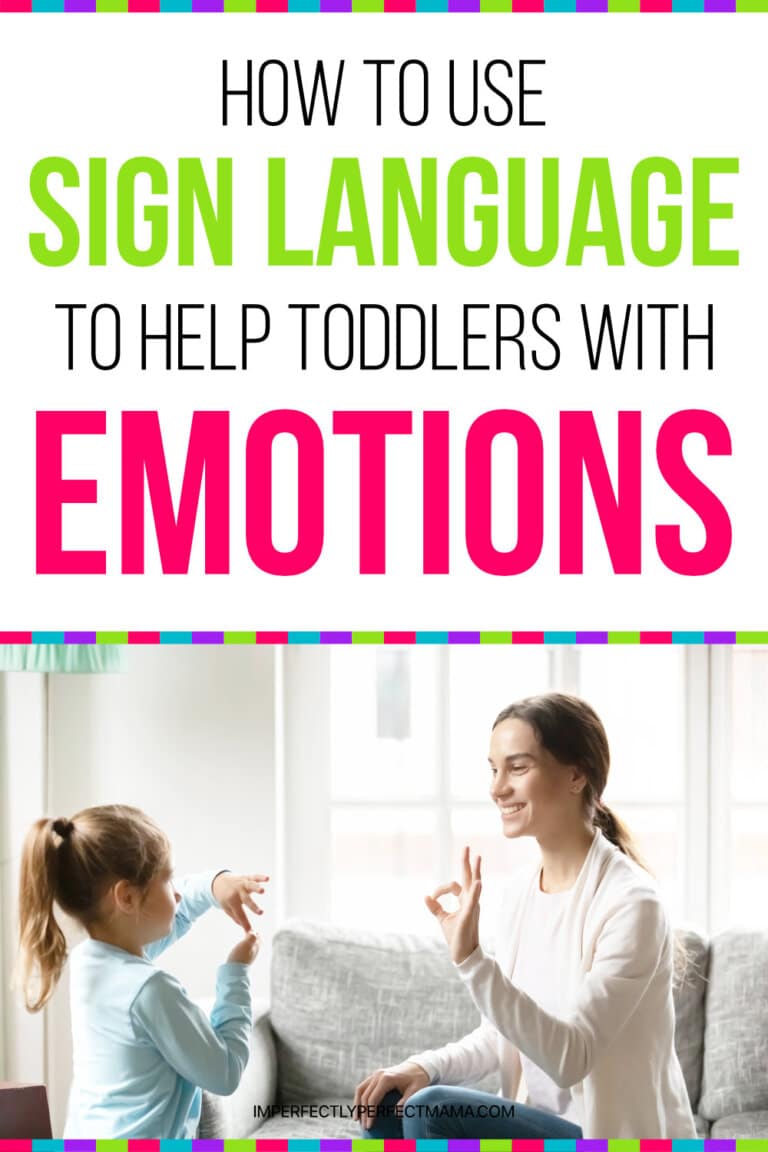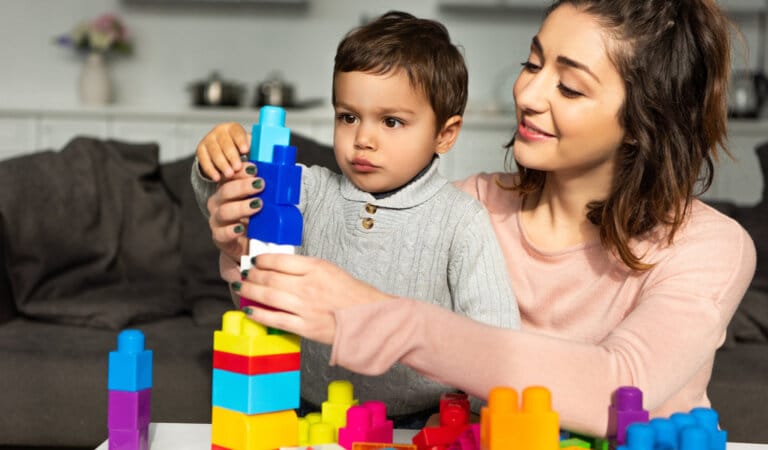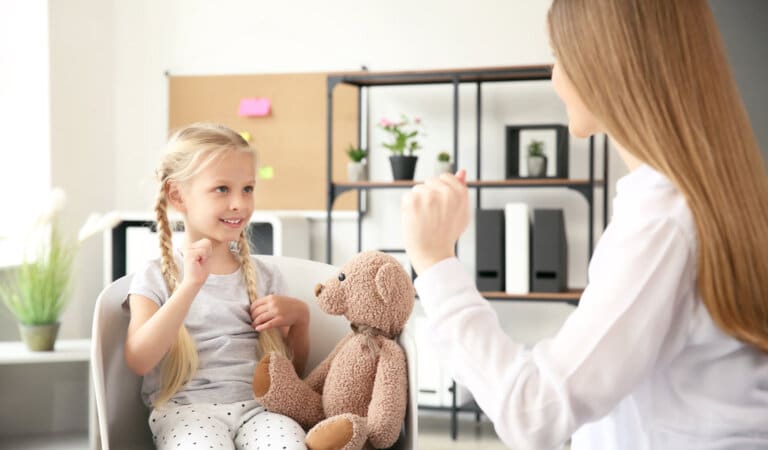I have been a teacher of the deaf and hard of hearing for 10 years now.

I am still astonished at the statistic that 90% of deaf children are born to hearing parents but most of those parents will never learn to sign.
In my years of teaching, I have witnessed the emotional struggles and turmoil of my students who have no one to sign with them about their feelings.
Writing, gesturing, texting, and attempting to lipread are not the same and don’t have the same benefits as sign language.
When my students don’t have the language to communicate their feelings, they feel frustrated, which often leads to negative behavior.
Toddlers are the same way.
When I became a mom two years ago, I started teaching my son sign language from the beginning. By 6 months old, my son was able to sign some crucial signs like “milk,” “more,” “eat,” and “all done” long before he had the capacity to verbally say those words.
While teaching my son sign language as a baby was extremely helpful and led to fewer frustrations and tantrums in our household, I knew that I did not want to stop signing when we reached the toddler years given the many lifelong benefits of sign language.
Benefits of Sign Language

1. Improves Behavior
Kids, especially toddlers and those with learning disabilities, don’t always have the ability to verbally express their wants and needs.
Naturally, this can lead to behavior problems at home and school.
However, utilizing sign language can give all kids a way to communicate in a way they feel understood, freeing them up to listen and concentrate on others around them.
2. Improves Spelling
Each letter in sign language has its own unique handshape and when we spell a word in sign language it is called fingerspelling.
When parents and kids fingerspell words, it improves their spelling. The visual and kinesthetic movement of signing helps commit new language and words to memory.
3. Improves Motor Skills
Sign language gives children a chance to practice fine motor skills by forming hand gestures for words and letters.
With repetitive practice, the muscles in the hand can strengthen as well as hand-eye coordination.
4. Builds Communication Skills
Facial expressions are a necessary component of American Sign Language and something parents should be implementing whenever they sign with their kids.
Sign language teaches kids to be better readers of body language and emotional language. 70-93% of communication is nonverbal.
Therefore, kids who use sign language are overall better communicators.
5. Increases Vocabulary
In the same way sign language can improve spelling, it also can improve vocabulary by giving the brain another way to commit a word to memory.
In addition to receiving the spoken and printed version of a word, the brain will also take in the manual and fingerspelled version of that same word. These are two more ways to help a kid remember a word.
A study done in 2000 by the National Institute of Child Health and Human Development showed that signing 2-year-olds had 50 more words in their vocabulary than non-signing children of the same age.
Why I’m Using Sign Language to Teach My Toddler His Feelings

Once toddlers start to have more vocabulary, it’s natural for them to drop some of their sign language in favor of spoken language. But this doesn’t mean that parents have to stop signing for their kids.
While toddlers are beginning to grasp clear, concrete nouns and verbs (i.e. milk, eat, apple, bath, sleep), abstract ideas and feelings are harder for them to understand. That’s where sign language comes into play.
I am continuing to teach my son signs for his feelings. Without a visual representation of their feelings, toddlers can be left feeling confused and frustrated by their inability to communicate the big emotions they are experiencing inside of them.
This powerlessness eventually leads to a tantrum or meltdown.
While on the other hand, research has shown that sign language can help calm a child in a stressful situation and, because children often can learn the sign for a word before the actual verbal word, my son now has a way to communicate and identify his feelings for the next time a situation arises.
So instead of crying, he can sign/say he’s sad, angry, scared, etc.
How I’m Using Sign Language to Teach My Toddler His Feelings
I use sign language in a number of ways when it comes to teaching my toddler about his feelings.
To start, whenever we talk or read about feelings, I use the sign to label the feeling. I say and sign the emotion a few times while making sure I slightly exaggerate my facial expressions to drive home the point.
“The little boy in the book is feeling angry [sign angry]. He’s angry [sign angry]. Why do you think he’s angry [sign angry]?”
Not long after I implemented this practice, my son began pointing out and signing whenever he noticed someone was sad, happy, or angry.
What’s even more fascinating (and in my biased opinion, cuter), he mimics the tone and inflection of my voice as well as my facial expressions.
Lastly and most importantly, I sign the feeling whenever my son or I are actually experiencing that feeling at the moment, including when my son is having a tantrum.
For example, my son is sad that TV time is over when the dinger rings. He starts crying a little and whining.
What do I do? I repeatedly identify the feeling my son is experiencing and back it up with the sign.
“You are sad, sad, sad [sign the word sad over and over with exaggerated facial expressions].”
“It’s okay to be sad [Sign sad again]. But the dinger rang, and it’s time for bed. You can help me pick out a book to read”
Using sign language and other positive parenting strategies, we have drastically reduced the length and intensity of a tantrum.
Learning sign language isn’t hard and certainly doesn’t have to be stressful. In fact, it can be a really fun activity to learn together with the whole family.
It’s something that doesn’t require any prior knowledge or experience and something you can start at any time.
Get ready for happier homes with sign language!
My Favorite Resources
- SignMeUp: Created by Elise Tate, an influencer and the wife of NFL football player Golden Tate, with the help of a Deaf expert in the language, SignMeUp consists of a book and poster with essential starter signs. What I like about this resource is that the pictures are clear, the children signing are diverse, the colors are aesthetically pleasing, and the explanations, memory tips, and examples on how to use them are easy to follow.
- ASL Nook: This website is run by a deaf mom, who has one deaf daughter and one hearing daughter. The family creates ASL videos for a variety of subjects.
- The ASL App: This app is run by deaf people, and has over 2,000+ signs and phrases.
- @Signngrow: Mary is a baby sign expert who shares her knowledge on her Instagram page. She offers videos, courses, and helpful tips for parents who want to teach their babies sign language.
- @mybaby.signs: Laura is a baby sign expert who also shares her knowledge on her Instagram page. She has courses and tips as well. She is a strong Deaf ally.
- Videos for 15 Common Feelings: I created videos for 15 common feelings your toddler may experience, and I included some activities to go along with those feelings.




1 Comments